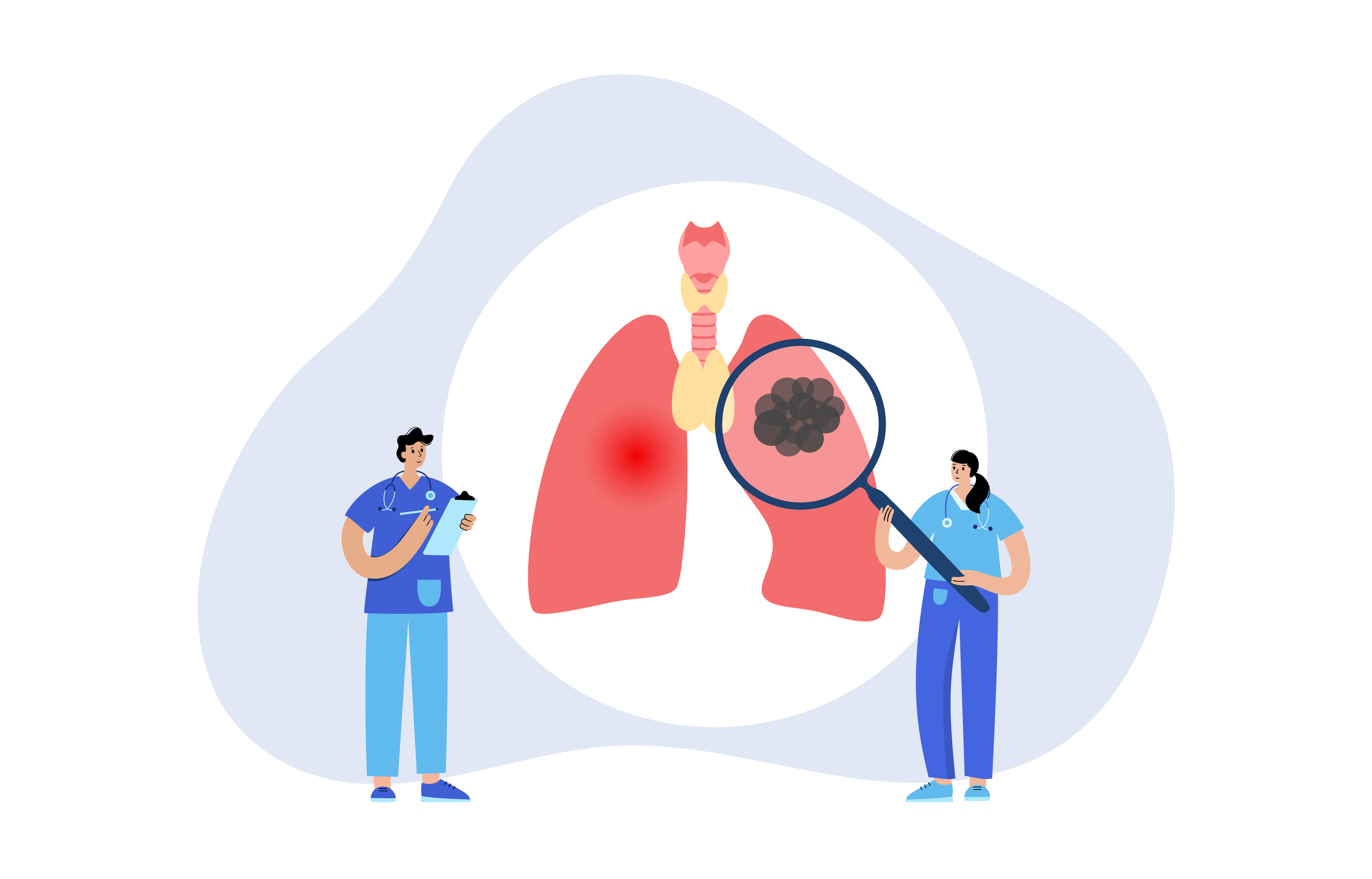Information for the Newly Diagnosed Patient
Understanding Non-metastatic Non-small Cell Lung Cancer (NSCLC)
Start
Disclaimer
This video was created by JADPRO in collaboration with Bristol Myers Squibb. Health information provided in the video is for educational purposes only and not intended to replace discussions with your doctor or care team.
Disclosures
Moderator: Beth Sandy, MSN, CRNP, FAPO
Ms. Sandy is on the Speakers Bureau for AstraZeneca, Amgen, Jazz Pharmaceuticals, Takeda Oncology, Eli Lilly and Company, and Merck & Co., Inc., and she is on the Advisory Board for Janssen Pharmaceutical Companies of Johnson & Johnson. She is a consultant for Abbvie Inc.
Terri Conneran
Ms. Conneran is a consultant for Janssen Pharmaceutical Companies of Johnson & Johnson, Loxo Oncology, Amgen, Revolution Medicines, AstraZeneca, Novartis Pharmaceuticals, Sanofi, Mirati Therapeutics, Bayer, Genentech, La Roche-Posay, Verastem Oncology, Bristol-Myers Squibb, Merck & Co., Inc., and Labcorp. She is on the Advisory Board for Mirati Therapeutics and La Roche-Posay and on the Speakers Bureau for KRAS Kickers.
Susan Knippel, DNP, APRN, FNP-C
Dr. Knippel has no financial interest to report.
Karen Reckamp, MD
Dr. Reckamp receives research funding to her institution from Genentech, Blueprint Medicines, Calithera Biosciences, Inc., Daiichi Sankyo, Inc., Elevation Oncology, and Janssen Pharmaceutical Companies of Johnson & Johnson. She is a consultant for Amgen, AstraZeneca, Blueprint Medicines, Daiichi Sankyo, Inc., EMD Sereno Inc., Genentech, GSK, Janssen Pharmaceutical Companies of Johnson & Johnson, Eli Lilly and Company, and Mirati Therapeutics.
Understanding Non-metastatic NSCLC | Table of Contents
Chapter 2 | Key Terms & Phrases in Lung Cancer Therapy
Neoadjuvant Treatment
Neoadjuvant treatment is given before the main treatment, like surgery. Some patients may receive chemotherapy or immunotherapy before surgery - in other words, neoadjuvant chemotherapy or neoadjuvant immunotherapy. The goals of neoadjuvant treatment are to treat any signs of disease at the earliest opportunity and to prevent the cancer from returning at a later point.
Surveillance
Surveillance is an ongoing process of collecting information about a person's cancer through laboratory tests and/or scans. A surveillance timeline will look different for each patient. Some patients may get scans every 3 months, and some patients may get scans every 6 months. The purpose of the repeat scans is to look for changes, no matter how small, over time. Surveillance is also referred to as "monitoring" or "follow up."
Survivorship
Survivorship, or living with cancer, begins the moment of diagnosis and continues for the duration of life. Regardless of disease status, patients who are living with lung cancer may lead active, hopeful lives during and after treatment, depending on the treatment goals they discuss with their care team.
Chapter 3 | Test Your Knowledge
Decisions about surgery and other possible medical treatments are made by just the surgical oncologist.

Explanation
Although the first person you meet after diagnosis might be a surgical oncologist, they will work with medical oncologists and potentially radiation oncologists to assess if additional treatments before (neoadjuvant) or after (adjuvant) surgery will be beneficial for you to help control the cancer.
Chapter 3 | Test Your Knowledge
To prepare for surgery, you should do which of the following:

Explanation
Smoking cessation is important to helping you achieve the best possible outcomes throughout recovery from surgery and beyond. Some medications may be unsafe to take during surgery, such as those for heart disease, so you may have to stop taking some medications prior to surgery. Finally, knowing your pulmonary function test results help surgeons predict your lung function after surgery.
A personal care team made up of family, friends, and community members is helpful, not only during recovery from surgery, but throughout your lung cancer journey.
Chapter 3 | Test Your Knowledge
Everyone with lung cancer must get surgery to control the cancer.

Explanation
Patients with larger tumors or tumors that are in harder-to-reach areas of the body, such as on the outer rim of the lung, may be better suited to radiation therapy. In addition, those patients who have poor lung function or other health problems may be better treated with radiation therapy. Some patients feel uncomfortable with the idea of surgery or are unable to take time away from work for recovery; other patients might have had other surgeries that could have a negative impact on a surgery for lung cancer. In both of these situations, radiation therapy would be a therapeutic option in place of surgery.
Chapter 4 | Test Your Knowledge
The four types of systemic (whole-body) therapies are:

Explanation
Although surgery and radiation are potential treatments for non-metastatic NSCLC, they are localized therapies that do not involve the entire body.
Targeted therapies are used for those patients that have certain biomarkers in their DNA or in their tumors. Chemotherapy is not as specific as targeted therapies but does target cancer cells. Immunotherapy helps a patient’s immune system recognize the cancer as a threat. Combination therapy simply combines two or more of these whole-body treatments.
Chapter 4 | Test Your Knowledge
Clinical trials are only for people who have no other treatment options.

Explanation
Clinical trials may offer opportunities or other treatment options for patients that are not available through the current standard of care. Clinical trials have helped improve surgical and radiation techniques, creating wider windows of availability of surgery to more patients. In addition, the rapid advances in immunotherapies for NSCLC are because of clinical trials. Your advanced practitioner can provide information about which trials are available to you.
Chapter 5 | Patient Resources
Advocacy Organizations
GO2 Foundation for Lung Cancer
For Information About Lung Cancer
Lung Cancer Research Foundation
Independent biomarker-specific patient advocacy groups are present on social media.


